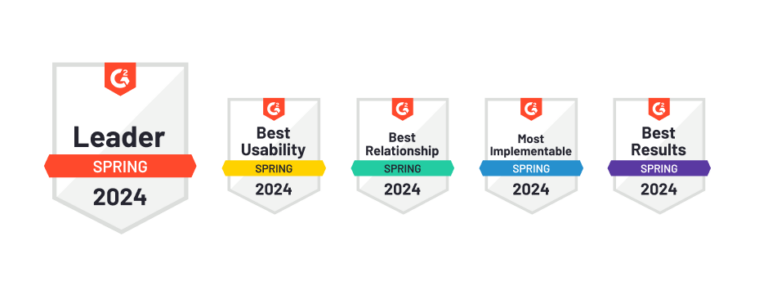
The success of your business is almost entirely based on data. This might seem obvious in some situations: The more leads, the more potential for sales. But it can also be seen in more tactical scenarios: Your ads performed better in City A than City B, so you may need to adjust your geographical focus. Or, job costs for a certain service may signal the need for a price shift.
No matter the depth of how you track data for your business, by getting into the habit of tracking and managing key data points, you can begin to see trends that help you determine what’s working, what’s not, and what you need to adjust. This systematic and data-based approach to running your business allows you to continually progress and grow your business – without too much guesswork. Here are 5 areas of your business to track, and how to do it.
Job Costs and Labor vs. Parts.
You should be familiar with what Job Costs are, it’s right there in the name. Job Costs are the total costs of your project – including labor, parts and any intangibles such as travel expenses. While Job Costs are a data point most all contractors are aware of, its one that can be difficult to keep up with. With common changes in part/equipment prices, fuel costs and more, it’s important to stay on top of job costs to see if you need to adjust your pricing. It may be possible that you are underpricing your services, purchasing too expensive products, or partnering with the wrong subcontractors.
Leads Per Month (And How They Convert).
No matter if you have a sales team, in-house marketing manager or you’re running the entire show yourself, it’s vital that you track leads per month. But it’s even more important to take it a step further.
While leads are important, you have to be sure you aren’t just stopping at tracking lead numbers. Who cares if you get 100 leads a month if none of them turn into sales? Alongside tracking leads, track where they come from. Were they website referrals? If the leads came from your website, how did they find your website to begin with? Was it social media? A search engine? If search, what was the search term? Once you find that out more about your leads, you can find new places to put your and even test new marketing methods. You can also dig even more deeply here. Do you see a common theme in your leads? Do they all want a particular service? Or maybe they are from a certain part of the city where you don’t have much competition? Track your lead numbers, but then dig more deeply to master your marketing.
Completed Jobs (And What They Tell You).
Completed jobs is another data point that your marketing team or internal staff might love, but you have to dig more deeply to really get the benefits of it. Naturally, you should always keep tabs of your completed jobs.
These are customers in which you’ve engaged with and (hopefully) profited from. However, not all completed jobs are created equal.When tracking completed jobs, you need to track certain metrics like parts vs. labor and your return-on-investment, to ensure they were profitable and if there are any adjustments you need to make. Similarly, completed jobs can give you great insights into your average customer.
Was there a service that was the most common? What was your new vs. returning customer ratio? If returning, how can we convert more customers into returning ones?
Your Online Metrics (All of ‘em).
This goes back to #2 and tracking your leads per month. While many contractors get business from word-of-mouth and connections, there’s a good chance you also get business online – or at least traffic. That traffic could be from social media, your website or maybe an online referral from a partner company.No matter your main platform, these metrics are all ones you should be constantly tracking.
The easiest and most essential tool is Google Analytics. This is going to let you know how people are coming to your website. It will show traffic from social media outlets, search engines, and any other referral source. Maybe you’ll see a lot of traffic is coming from Facebook, so then you may want to consider running Facebook ads or continue with the type of content you’re posting.
Aside from just showing you where visitors are coming from, Google Analytics also offers the ability to view their behavior while on your site. How long did they spend on your page? Did they go to a certain service section?
Another simple tool for tracking social media metrics are their native analytic features. Facebook, Twitter, and Instagram all offer tools to help you see how your posts are performing. While follower count looks pretty on social media, you should also be tracking engagement, clicks and watching how your followers are interacting with your posts. This will give you insight as to what’s working well on social media, and what can be improved.
Track Your… Tracking.
While these are just a metrics to keep track of, there are plenty more to unpack. This can get even more in-depth when you look at the certain sides of your business: sales, finances marketing, and operations. There are metrics in all outlets that can help you grow. However, one thing you need to ensure is that you have a place to track and store these metrics in one place.
While it’s great going between your CRM, Google Analytics and Facebook analytics tool, it’s easier to place metrics you’re curious about in one central location for tracking. This could be as something as simple as a shared Google Sheet between your team, or something as in-depth as a project management platform. However, it’s important to be methodical about tracking your data, or else – it may be too much to track and learn from.
Metrics are the driving force behind your company’s growth. However, you have to be ready to dive deeply and see what metrics are telling you. No matter if you’re trying to find out the best pricing, or the best way to capture new business, a lot of answers can be found in tracking and monitoring your data.


